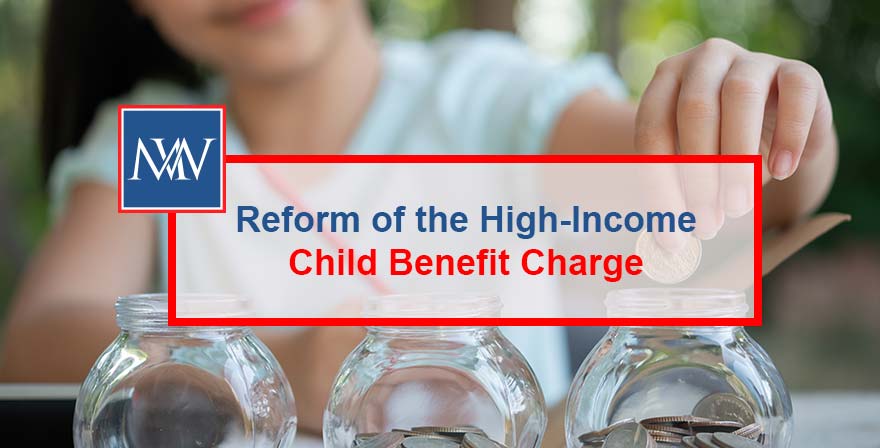
Reform of the High-Income Child Benefit Charge
The High-Income Child Benefit Charge (HICBC) is a tax charge that operates to claw back child benefit where the claimant and/or their partner have adjusted net income in excess of the clawback threshold. For 2023/24 and previous years, this was set at £50,000. The HICBC was equal to 1% of the child benefit paid for every £100 of adjusted net income in excess of £50,000. Once income reached £60,000 the HICBC is equal to the child benefit paid for the year.
Where both the claimant and their partner have income in excess of £50,000, the HICBC is levied on the partner with the higher income.
Higher thresholds from 6 April 2024
The threshold triggering the High-Income Child Benefit Charge is increased to £60,000 from 6 April 2024. From that date, the clawback rate is reduced to 1% of child benefit for every £200 by which adjusted net income exceeds £60,000. This means that the charge is equal to the child benefit for the year once adjusted net income reaches £80,000.
The increased threshold and reduced clawback rate mean that, for 2024/25, child benefit for the year is not lost unless the higher earning partner has income of £60,000; and as long as their income does not exceed £80,000, some child benefit will be retained.
Example
Gemma and George have two children. Gemma looks after the children and does not have an income in either 2023/24 or 2024/25. George has adjusted net income of £70,000 in each year.
In 2023/24, George is liable to the HICBC equal to the child benefit received in the tax year.
However, for 2024/25, George’s HICBC charge is only equal to 50% of their child benefit. His income exceeds the £60,000 threshold by £10,000. At a rate of 1% for every £200 of income above £60,000, this equates to a charge of 50%.
Move to household income
At present, the trigger for the HICBC is individual income not household income. This creates some anomalies. For example, for 2023/24 and earlier years, a couple where each partner had adjusted net income of £49,999 (combined income of £99,998) retain their child benefit in full, whereas a couple where one partner has no income and the other has income of £60,000 lose all their child benefit in the form of the HICBC. For 2024/25, a couple each with adjusted net income of £59,999 (combined income of £119,998) retain their full child benefit, whereas a couple where one partner has no income and the other has income of £80,000 lose all their child benefit in the form of the HICBC.
To address this unfairness, the government announced a move to a system based on household income from April 2026.
Important to claim
Where the HICBC applies, the claimant can elect not to receive child benefit. However, to preserve the associated National Insurance credit, it is important that child benefit is still claimed. This will provide qualifying years for state pension purposes, something that is particularly important if the claimant does not have sufficient income from employment or self-employment to secure a qualifying year.
For more information, Book a Free Consultation
Need Accountancy Support?
For information on bespoke training, or if you have any other questions for Makesworth Accountant, please fill in your details below
















 151
151